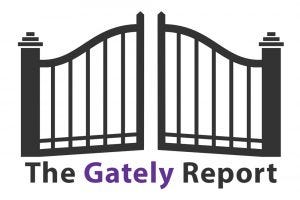Meantime, the FBI prevented more than $130 million in ransom payments to the Hive ransomware group.

Cybersecurity M&A and investment have been explosive the past few years, but the volume is likely to return to more normal levels in 2023.
 So say Parag Sheth, managing director of Progress Partners, and Eric Bell, managing director of Cyber Advisory Partners. We asked both to assess trends in cybersecurity M&A and investment, and what we can expect in 2023.
So say Parag Sheth, managing director of Progress Partners, and Eric Bell, managing director of Cyber Advisory Partners. We asked both to assess trends in cybersecurity M&A and investment, and what we can expect in 2023.
Progress Partners is a corporate advisory firm that works with buyers and sellers of emerging growth companies to complete M&A or private placement transactions. Cyber Advisory Partners helps emerging and leading security companies access the resources, relationships and intelligence needed to grow their businesses and advance U.S. national security.
Cybersecurity Industry Remains Strong Regardless of Economy
Despite economic headwinds, cybersecurity remains a strong and thriving industry because organizations have to protect themselves from ever-increasing cyber threats.

Progress Partners’ Parag Sheth
“There’s no alternative to doing so because we have moved into a data-centric society and that data is worth something to somebody,” Sheth said. “So they are constantly looking for ways to acquire that data and we have to find ways to protect it. People have wearables. People wear these devices on their body. That data is going to be put somewhere. And if you don’t protect that data and somebody gets ahold of that, that can be dangerous to that person. We have to keep evolving. We have to keep innovating. And I think that is why the cyber market continues to be robust. It continues to be attractive. And it’s a highly innovative market where a lot of capital is invested so that we can address these ongoing issues that you and I both face.”
Cybersecurity ‘Strategic Imperative’
Within technology, cybersecurity is “such a strategic imperative from top down,” Bell said.

Cyber Advisory Partners’ Eric Bell
“The consequences of not having security are just enormously high for any organization,” he said. “And it’s not like breaches or ransomware attacks are stopping. They’re happening every day. And every day I see new headlines of a school system being shut down, hospitals being held hostage. So it’s still top of mind for everyone. And I think cyber, unlike a lot of categories within technology, doesn’t go through the same kind of technology maturation cycle. Innovation is going to happen because the hackers are innovating and malicious actors are out there constantly trying to find new ways to get our data and to get our information. And so you can’t kind of sit back and wait for cybersecurity to be solved. It’s constantly evolving and it doesn’t go through kind of peaks and troughs.”
There’s more ways that people can get hacked, and that’s forced organizations to invest more in cybersecurity, Bell said.
Scroll through our slideshow above for more from Sheth and Bell, and more of the week’s cybersecurity news.
Want to contact the author directly about this story? Have ideas for a follow-up article? Email Edward Gately or connect with him on LinkedIn. |
About the Author(s)
You May Also Like


